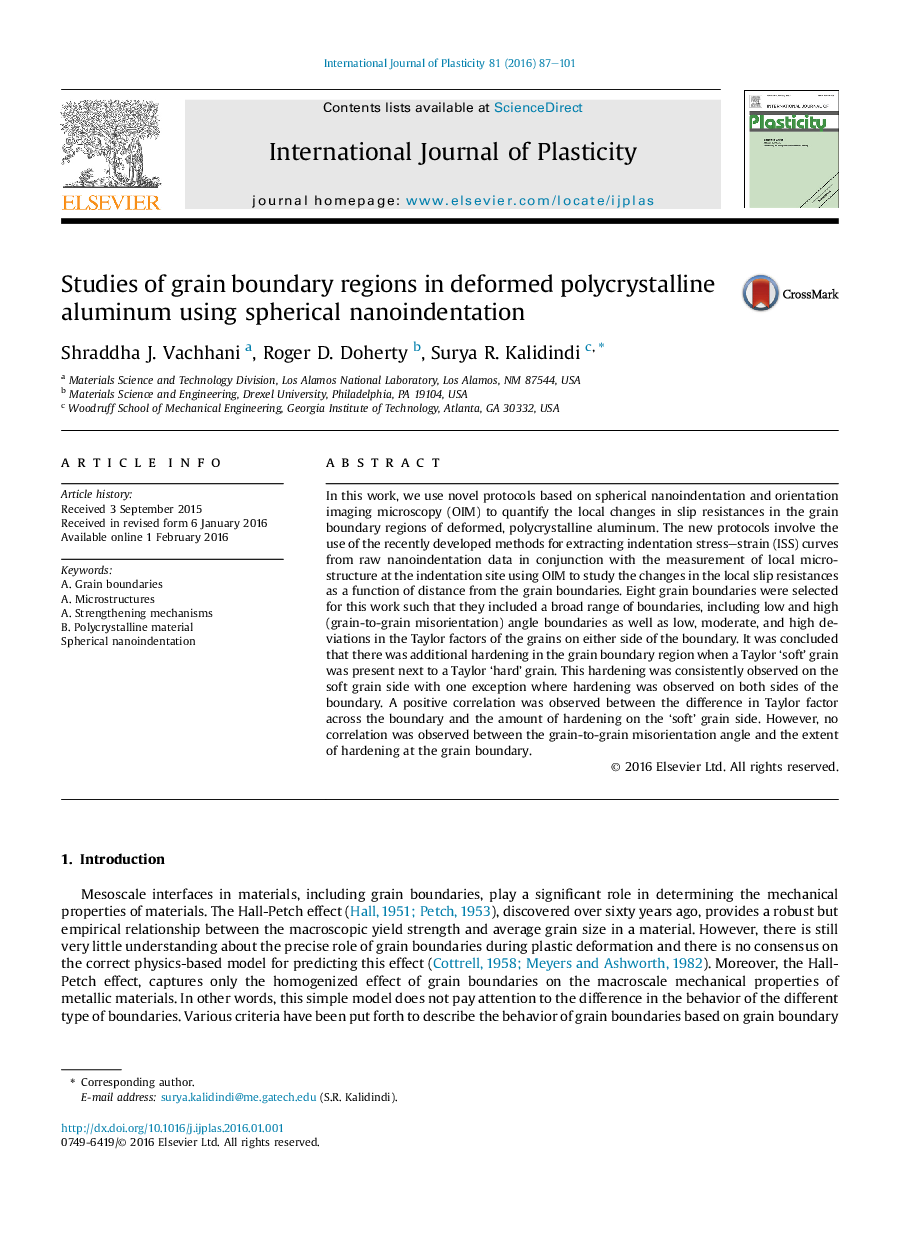| Article ID | Journal | Published Year | Pages | File Type |
|---|---|---|---|---|
| 784350 | International Journal of Plasticity | 2016 | 15 Pages |
•A combination of spherical nanoindentation and orientation imaging microscopy were used to probe grain boundary regions.•Indentation yield strength measurements effectively differentiate between the roles of different grain boundaries.•Soft grains show additional hardening near grain boundaries, when present next to hard grains.•The amount of hardening at the grain boundaries correlated well with the difference in Taylor factor across the boundary.
In this work, we use novel protocols based on spherical nanoindentation and orientation imaging microscopy (OIM) to quantify the local changes in slip resistances in the grain boundary regions of deformed, polycrystalline aluminum. The new protocols involve the use of the recently developed methods for extracting indentation stress–strain (ISS) curves from raw nanoindentation data in conjunction with the measurement of local microstructure at the indentation site using OIM to study the changes in the local slip resistances as a function of distance from the grain boundaries. Eight grain boundaries were selected for this work such that they included a broad range of boundaries, including low and high (grain-to-grain misorientation) angle boundaries as well as low, moderate, and high deviations in the Taylor factors of the grains on either side of the boundary. It was concluded that there was additional hardening in the grain boundary region when a Taylor ‘soft’ grain was present next to a Taylor ‘hard’ grain. This hardening was consistently observed on the soft grain side with one exception where hardening was observed on both sides of the boundary. A positive correlation was observed between the difference in Taylor factor across the boundary and the amount of hardening on the ‘soft’ grain side. However, no correlation was observed between the grain-to-grain misorientation angle and the extent of hardening at the grain boundary.
